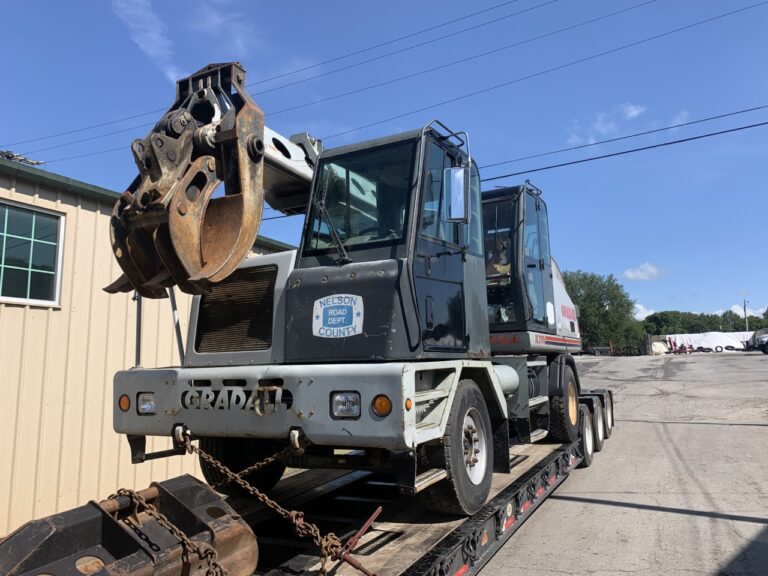Heavy Equipment Towing for Non-Running Machinery

William Thomas / January 2021
One upside of transport and delivery of motorized heavy equipment is that you can simply drive them onto the trailer and ship them to their designated destinations. Such self-powered and operational equipment as tractors and bulldozers can be loaded with great ease and convenience onto the trailer. But what happens when this equipment is broken down and no longer working?
How to Load Non-Running Machinery onto a Trailer for Safe Delivery
When transporting non-running machinery, the first and most crucial step would be to clean it and remove any debris stuck at its front or rear end. If you are loading smaller machinery, such as a utility tractor (UTV), you use additional loading equipment such as forklifts and cranes to load the shipment. All the same, be keen to ensure that the chain and hook-up accessories on the crane can handle the weight of the load to prevent ugly incidences such as unprecedented falls. This would not only damage the cargo, but is also dangerous to the loading team on the ground.
If you are loading relatively larger tractors or bulldozers, you can use chains and an automatic or manual come-along tool. Set up your chains and tie them, each on both sides of the axle. You can then join both chains at the front of the cargo to form one line that runs down to the middle part of your load and then connect it to the come-along. The chains should be attached at a reasonable distance to keep them from scraping and damaging the hood sides. Use the come-along tool to lift the shipment up the ramp, load it onto the tractor, and settle it in position. Ensure that the load’s weight is evenly distributed on each axle for safe shipping. Proper load balancing will give the drier maximum control over the tractor and trailer. That way, he will not have to come down and confirm the cargo’s orientation now and then.

Transport Your Non-Running Machinery Today
Heavy Equipment Transport is always available for a quote. Fill out the form or give us a call now! (888) 730-2951
Securing a Non-Running Machinery on a Trailer for Smooth Transport
The number of chains and tie-downs you will require will depend on the weight of your cargo. That said, ensure that your tie-down chains’ strength equals at least 50 percent of the cargo weight. Another rule of thumb is that you have at least one tie-down hooked at every contact point. In other words, you are required to secure your cargo to the trailer at every wheel. You might need approximately 4-5 tie-down chains, which might vary based on your application area. Here are some crucial fundamentals and legal regulations you must adhere to when securing your non-running machinery onto the trailer:
- • Ensure that the chains are well tightened to • prevent the load from wiggling and shifting during transit
- • Fasten the chains or tie downs in a direct, downward direction without angles, twists, or tangles.
- • Be sure to wrap the extra chains securely around the links to keep them from getting loose, which might compromise your safety and those of other motorists on the road.
- • Double-check your hooks and chain sizes and ensure that they match. Otherwise, an unsuitable link might make the chain snap endangering your safety, that of your cargo and shipping equipment.
Safety is Key in Successful Trucking and Delivery of Non-Running Machinery
Loading non-running, oversize machinery onto a trailer can be quite dangerous. It is therefore crucial that you follow all the set safety procedures and protocols to ensure utmost safety. You should also have the correct shipping equipment required to tow your specific cargo and ensure that the loading crew follows the correct securement procedures. Suffice to say; perhaps the best option would be to find a reliable heavy hauling company to handle the job for you, especially if you are not experienced in such tasks. Go for renowned and reputable shipping companies such as Heavy Equipment Transport to guarantee a safe, timely, and productive heavy equipment transport process.